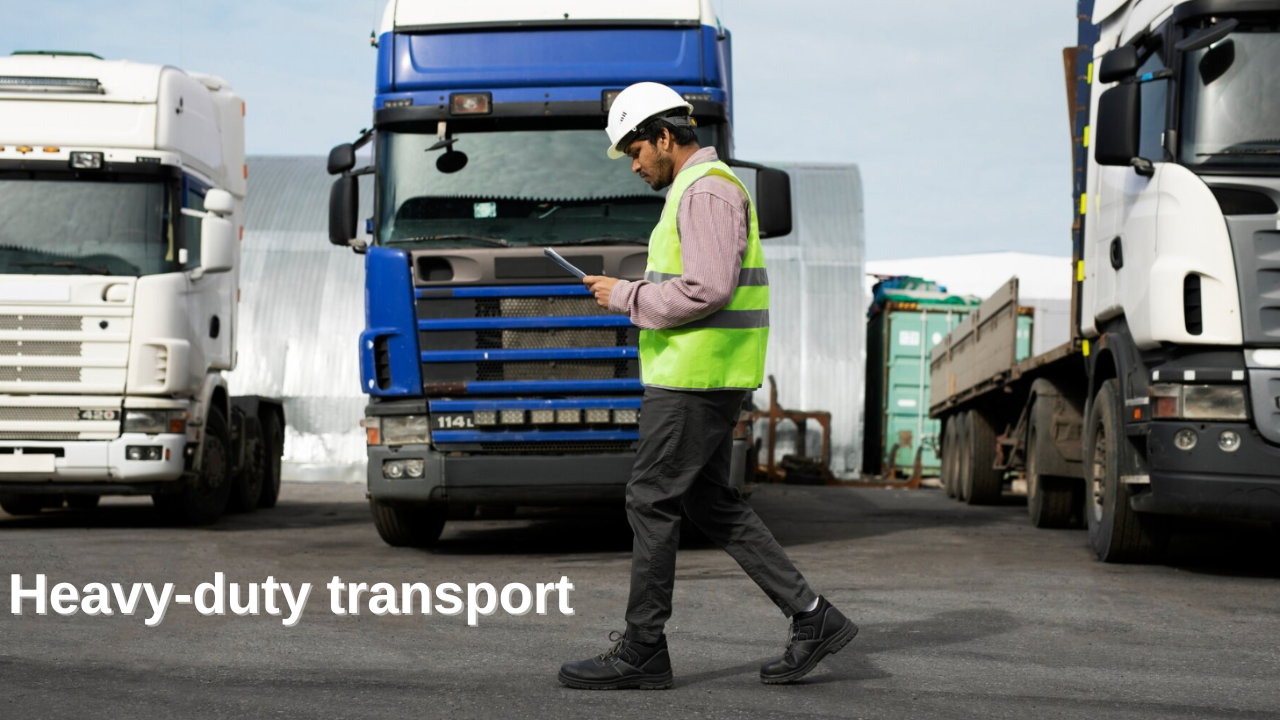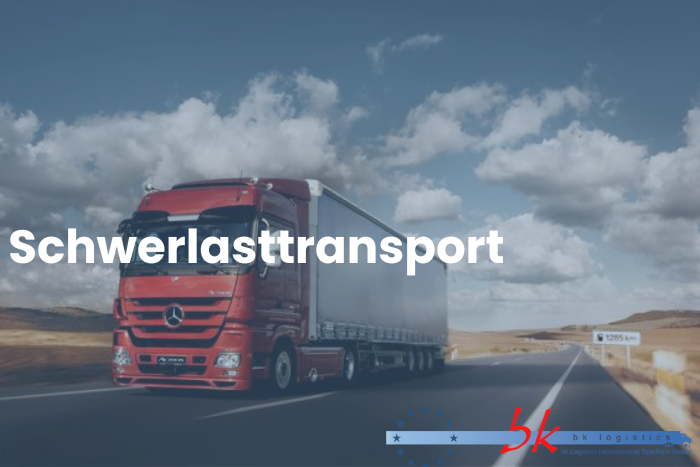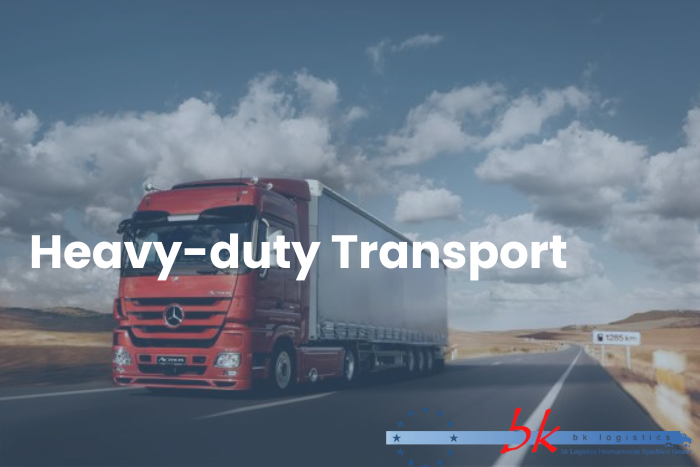News
Heavy load transportation
The importance of heavy cargo transportation
Heavy goods transportation is one of the basic elements of industrial activities and infrastructure projects. It plays an important role in many industries such as construction, energy, mining and automotive. This type of transportation is very important not only for transporting large and heavy materials, but also for completing the project on time and within budget. For example, turbines and generators used in the construction of power plants often weigh several tonnes and require special equipment and expertise to transport them correctly.
Heavy cargo transportation is part of world trade and economic development. International transportation enables the efficient transfer of goods and services between countries. In this context, large transportation projects contribute to increasing trade and economic integration between countries. Heavy goods transportation creates regional employment and stimulates the local economy. Precise and efficient transportation of goods reduces both costs and the competitiveness of companies.
Sustainability has become an important issue in heavy cargo transportation today. The environmental impact of traditional transportation methods is pushing companies to look for greener and greener solutions. At this point, alternative fuel sources and electric transportation vehicles support the goal of reducing environmental impact.
Heavy transport processes
Heavy cargo transportation involves a series of steps, from planning to loading, handling and unloading. The first step is to prepare a detailed transportation plan according to the type and quantity of the cargo. The transportation plan includes the characteristics of the load, transportation route and estimated costs. For example, an appropriate transportation method should be chosen according to the weight and size of the load. Factors such as the condition of the roads on the route and the carrying capacity of the bridges also need to be taken into account.
The installation process must be carried out carefully. The load must be properly fastened and located securely. This stage is very important to ensure safety during the transportation of the cargo. It is essential to comply with occupational safety standards and use the necessary protective equipment during loading operations.
The cargo must be constantly monitored during the transportation process. Thanks to advanced technologies, it is possible to receive real-time information about the status of the cargo and the transportation process. GPS and other tracking systems are used to ensure the safety of the cargo at every stage of the transportation process.
The unloading phase is also an important part of the transportation process. Cargo must be properly unloaded and securely stowed at destination. Occupational safety rules must be followed. Improper unloading may result in damage to the cargo and endanger the safety of workers.
Tools and equipment used
Vehicles used in heavy load transportation are of great importance for a safe and effective transportation process. Modular trailers are vehicles commonly used to transport heavy loads. These trailers are flexible and versatile systems that can be put together in a variety of configurations. Thanks to their modular design, they can be individually adapted to the requirements of different loads. For example, modular trailers for transporting wide and long loads are expandable and offer maneuverability even in the tightest spaces.
Self-carrying vehicles have a high carrying capacity in difficult terrains and are widely preferred especially in the construction and mining sectors. These vehicles can easily carry large loads and are usually four-wheel drive.
Other vehicles used in heavy load transportation include trucks, cranes and special transport systems. While heavy trucks attract attention with their high tonnage capacities, cranes are used when loads need to be lifted or lowered from very high heights. These devices also play an important role in loading and unloading operations.
Forklifts, pallets and lifting equipment used in loading and unloading are important tools that facilitate the transportation of heavy loads. These devices increase both safety and efficiency. For example, loads carried on pallets can be quickly loaded and unloaded using forklifts, significantly reducing processing time.

Legal regulations and safety standards
Many legal regulations and safety standards apply when transporting heavy loads. These regulations are designed to ensure that transportation operations are carried out safely. Transportation permits require obtaining the necessary documents for the transportation of heavy loads. These permits vary depending on the characteristics of the load, its route and the type of transport vehicle. For example, some routes may have specific weight restrictions that must be taken into account when planning transportation.
The legal determination of the routes on which transportation operations are carried out is carried out by the route management. Routes created for the transportation of goods must provide safe transportation conditions. Vehicles used for transportation must be maintained regularly and drivers must have adequate training in carrying heavy loads.
Safety standards must also be applied in areas where transportation is carried out and during loading and unloading operations. There must be necessary safety signs and warnings in loading and unloading areas. These measures are important to ensure the safety of both employees and those around them. In order to prevent accidents during the transportation of loads, occupational safety rules must be followed.
Logistics management in heavy cargo transportation
In the transportation of heavy goods, logistics management plays a very important role in the planning, implementation and control of the transportation process. Logistics management ensures effective use of resources and reduces costs. This process covers a wide range from determining transportation routes to loading and unloading plans.
Correct logistics management optimizes transportation processes and also increases customer satisfaction. Delivering customers' cargo on time and safely increases the competitiveness of companies. Effective logistics management allows more efficient use of resources and therefore cost savings.
Advanced software solutions allow you to control your logistics processes more effectively. This software helps you optimize transport routes and increase resource utilization. For example, a software program can shorten transportation time by determining the most suitable route for the load to be transported.
Target markets in heavy cargo transportation
Heavy-duty transportation is a popular service in many industries. The construction industry is one of the largest markets in heavy cargo transportation. Construction projects require large machinery, construction materials and heavy equipment. For this reason, the demand for reliable transportation services in the construction industry is quite high.
The energy sector is another important market that requires heavy cargo transportation. Wind turbines, solar panels and other energy systems require moving large and heavy materials. This type of transportation is crucial for the efficient implementation of energy projects.
Mining is another important market for heavy-duty transportation. Heavy machinery and equipment used in mineral processing require special transportation methods. Since mining projects often have difficult terrain, heavy-duty transportation plays an important role in this process.
Risk management in heavy cargo transportation
Transporting heavy items involves various risks. Risks that may occur during the transportation process include accidents, damages and delays. Therefore, developing an effective risk management strategy is important for carrying out transportation processes safely and efficiently.
Risk management should be applied in transportation planning, loading and unloading stages and route management. For example, safety precautions must be taken to prevent possible accidents during transportation. It is important to determine alternative routes and take adverse weather conditions into account to avoid possible delays.
Preventing accidents is critical for cargo and employee safety. Companies can minimize risks by training their employees and maintaining safety standards. Regular maintenance of the equipment used during the transportation process will help prevent accidents.
Key elements of a successful transportation project
A successful heavy-duty transportation project is possible by bringing together a few basic elements. First of all, a detailed planning process is required. Careful planning at every stage of the transition process is crucial to the success of the project. Factors such as the nature of the load, the transportation route and the vehicles used should be taken into account during planning.
Effective communication should be ensured at every stage of the transportation process. Effective communication between everyone involved in the transition process helps identify and resolve potential problems in advance. Lack of communication can cause disruptions in the moving process.
The continuous improvement process is an important part of a successful transportation project. Companies should continually review their transition processes and make improvements if necessary. This reduces both the costs and efficiency of transport processes.



